In 2019, the total share of the e-learning market exceeded $200 billion and, according to trends , will grow by 8% annually until 2026. The emergence of new technologies such as cloud computing and artificial intelligence, coupled with the increase in remote tendencies worldwide, will drive growth. And solutions that provide flexibility in storing, sharing, and accessing content remotely and in a collaborative fashion will prevail. Online communities and social media platforms are increasingly driving this shift by enabling collaborative learning, resource sharing, and interactive engagement.
The pandemic limits live communication, forcing us to study at home. But this does not mean that the crucial social element is excluded from the learning process. Modern mobile platforms help maintain emotional interaction between teachers and learners and promote regular communication between students. Social learning platforms build upon natural learning processes, such as learning through interaction, observation, and collaboration, and enhance them with digital tools.

But what is the definition of social learning today? Why does it become so important? And what social learning platforms for education are there to choose from?
Let’s figure this out and take a look at the most popular examples of Social Learning Platforms. WTT Solutions has extensive experience with e-learning software, and we are ready to share it with you.
WHAT IS A SOCIAL LEARNING PLATFORM? TASKS AND BENEF
Social learning itself is an ongoing process of learning from other people. We learn by observing, asking questions, and sharing knowledge through eLearning technologies, which brings numerous benefits to both individuals and organizations.
A special online environment where members can learn, collaborate, comment on, share their formal or informal experience, exchange knowledge, and interact with each other is the best social learning platform definition. These platforms enable learners to engage in active learning and active participation by fostering collaboration, discussion, and community-driven knowledge sharing.
What is a social learning platform exactly? The software can range from LMS/LXP solutions to one-to-one online courses, group exercises, webinars, leaderboards, and more. The main idea is to increase engagement and motivation and enable knowledge sharing. Social learning platforms also support collaborative activities and peer interaction, allowing users to work together, share feedback, and deepen their understanding through group tasks and discussions.
Social learning is common in both academic and corporate environments. Leading organizations are increasingly using LMS to make curriculum engaging and active. These platforms foster informal learning and contribute to a holistic understanding of topics by integrating diverse perspectives and encouraging continuous, real-time feedback among peers.
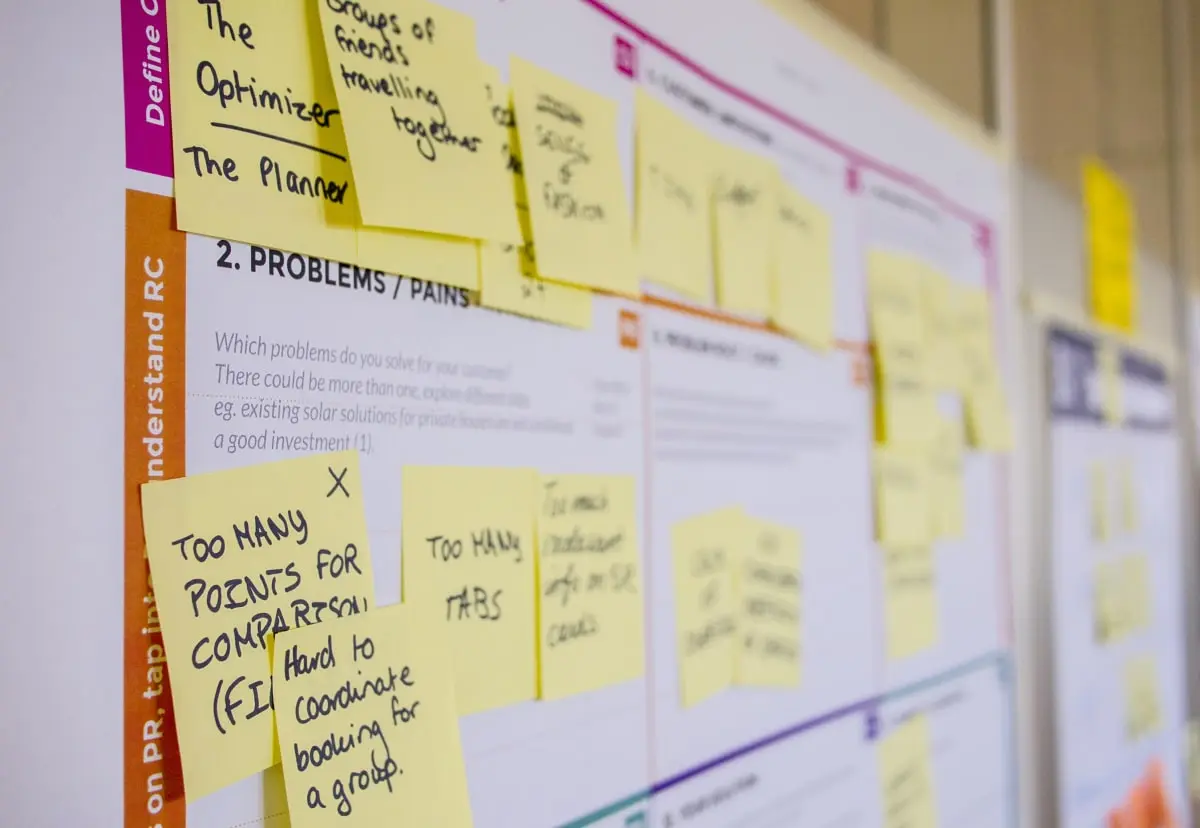
Benefits of social learning tools
Gaining new skills quickly. Enriching learning with social elements opens up many opportunities. By sharing your knowledge and experience, you allow students to master new skills naturally. They don’t need to read dozens of books to get an adequate understanding of the subject.
Improved collaboration between employees. You could hire ten experts with impressive qualifications, but if they can’t work as a team, it’s all in vain. LMS training will set the standard for collaboration within the company. You will develop a self-learning community that will strengthen your position in the business niche.
Gaining organizational knowledge. You cannot use collective knowledge if you lock students in a small class. If you want to unleash genius and stimulate everyone’s thinking outside the box, your LMS for social learning must include a social dimension.
- Enhanced communication. The very act of studying together will kick-start a culture focused on effective communication. The increase in the assimilation of the material happens naturally and completely free.
Boosted return on investment. None of the benefits mean anything without visible results. Once you introduce collaborative learning, students will understand the material faster. In addition, you will have a group of versatile team players who will share their knowledge.
Better learning engagement. It’s no secret that online learning has a low reputation for engagement. A little social function changes everything and inspires your colleagues to learn, ask questions, and reward each other.
How do we all know this? Our platform solutions are primarily focused on engagement. The main tasks solved by social learning software include:
- Make teamwork an essential part of e-learning, identify and close knowledge gaps, and strengthen team communication;
- Create a space where students can collaborate, exchange ideas and solve problems, find more effective solutions;
- Help organizations maximize talent by enabling people to share knowledge and experience through structured collaborative learning.

SOCIAL LEARNING PLATFORMS FOR EDUCATION: IMPACT ON MODERN LIFE
A learning management system with built-in social media functions can improve the quality of online learning programs. Learning is much more effective in a social environment since knowledge is acquired naturally. In messengers, presentations, tests, and educational materials are more perceived as entertainment, although they are part of the educational process.
The best social learning platforms are useful for non-formal education, providing an opportunity to communicate with peers, exchange tips and tricks, and seek professional help. We become more open and communicative.
Discussion forums and communities allow you to share and comment, interact, start new discussions, post topics, and share knowledge. We receive incentives to open new communication channels for further learning.
Collaborating and sharing content in real time becomes easier. For interactive collaboration, students can connect via live streaming video or webinars.
LMS with social learning features offers students 24/7 availability, encourages self-learning, and motivates them to achieve their goals. A sense of competition encourages you to work harder and compete, increasing productivity. Our world is becoming accessible and competitive!
KEY FEATURES OF SOCIAL LEARNING PLATFORMS
Social learning platforms are designed to transform the learning experience by fostering interaction, collaboration, and knowledge sharing among learners. By integrating a variety of social learning features, these platforms enable users to actively participate in the learning process, leading to a deeper understanding and more meaningful learning outcomes. Here are some of the key features that set the best social learning platforms apart:
– Collaborative Projects: Social learning platforms empower learners to work together on collaborative projects, encouraging teamwork, problem-solving, and the exchange of ideas among fellow learners.
– Online Courses: Many platforms offer a wide range of online courses, providing structured learning experiences that can be tailored to individual or organizational needs.
– Learner Engagement: Features such as discussion boards, interactive quizzes, and gamification elements are designed to boost learner engagement and motivation, making the learning process more dynamic and enjoyable.
– Learning Community: A strong learning community is at the heart of any effective social learning platform. These communities allow learners to connect, share experiences, and support one another throughout their educational journey.
– Community Building: Tools like social media groups, forums, and live events help build a sense of belonging and facilitate ongoing interaction within the learning platform.
– Continuous Improvement: Actionable insights and analytics enable organizations to monitor progress, identify areas for improvement, and refine their learning strategies for better results.
– Supportive Environment: The best social learning platforms create a supportive environment where learners feel comfortable asking questions, sharing knowledge, and providing peer feedback.
– Course Creation: Instructors and subject matter experts can easily design and deliver online courses, often with intuitive course creation tools that support a variety of learning materials.
– Multimedia Integration: The integration of videos, images, and other multimedia elements enriches the learning experience and caters to different learning styles.
– Corporate Training: Social learning platforms are widely used for corporate training, offering flexible solutions for professional development and upskilling employees.
– Organizations Seeking: Companies looking to promote interaction, foster a sense of community, and enhance learning outcomes among their teams find social learning platforms invaluable.
– Project Planning: Built-in project planning tools allow learners to apply their skills in real-world contexts, bridging the gap between theory and practice.
– Mentorship Programs: Many platforms include mentorship programs, connecting learners with experienced professionals for guidance, support, and career development.
– Professional Contexts: Social learning platforms are tailored to support learning in various professional contexts, equipping users with essential skills for success in the workplace.
– Human Context: Recognizing the importance of human interaction, these platforms provide a space for meaningful connections and collaborative learning.
– All the Features: A comprehensive social learning platform brings together all the features necessary to support collaborative learning, knowledge sharing, and continuous improvement.
– Machine Learning: Some advanced platforms leverage machine learning to offer personalized learning recommendations and adaptive assessments, enhancing the overall learning experience.
– Corporate World: In the corporate world, social learning platforms are essential for delivering scalable, effective professional development programs.
– Professional Growth: By supporting ongoing learning and skill development, these platforms play a crucial role in professional growth and career advancement.
– Organizations Worldwide: Social learning platforms connect learners from around the globe, enabling organizations worldwide to benefit from diverse perspectives and collaborative learning.
– Learning Approach: Emphasizing a collaborative and interactive learning approach, these platforms recognize that learning is most effective when it is social, engaging, and supported by feedback.
– Interactive Quizzes: Regular interactive quizzes and assessments provide learners with immediate feedback, helping them track their progress and identify areas for improvement.
– Key Aspect: Ultimately, the key aspect of any social learning platform is its ability to facilitate collaborative learning and knowledge sharing within a supportive, interactive environment.
By incorporating all these features, social learning platforms create a holistic and engaging learning environment that not only enhances learning outcomes but also supports continuous learning, professional development, and organizational success.
Best Social Learning Platforms
Let’s check out the top 5 social learning platform examples in our opinion and highlight their major pros and cons.
MindMeister
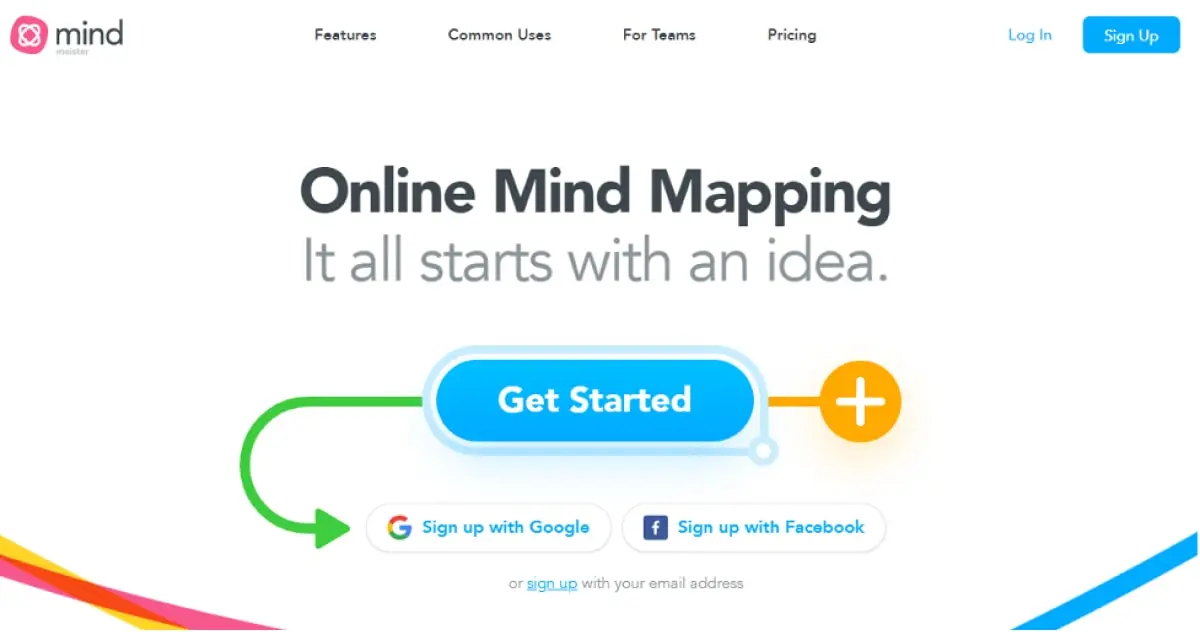
This is an online learning tool for brainstorming, taking notes, planning projects, and handling creative tasks. MindMeister makes it easier to visually interact with other people.
Key features:
- Mind map templates for the faster organization of new brainstorm sessions and project planning tasks;
- Image, video, and other media attachments for more convenience and impact in the process of planning;
- History mode for total immersion in the planning process and editing of small details.
The main pros of MindMeister include:
- a free version (which, however, doesn’t have all the paid features like file and image attachments, PDF export, etc.);
- wide visual planning and collaboration opportunities;
- in-depth mind map editing capabilities.
One drawback to this application is that it doesn’t allow you to export mind maps in different formats such as ppt, even in the paid version.
EdApp
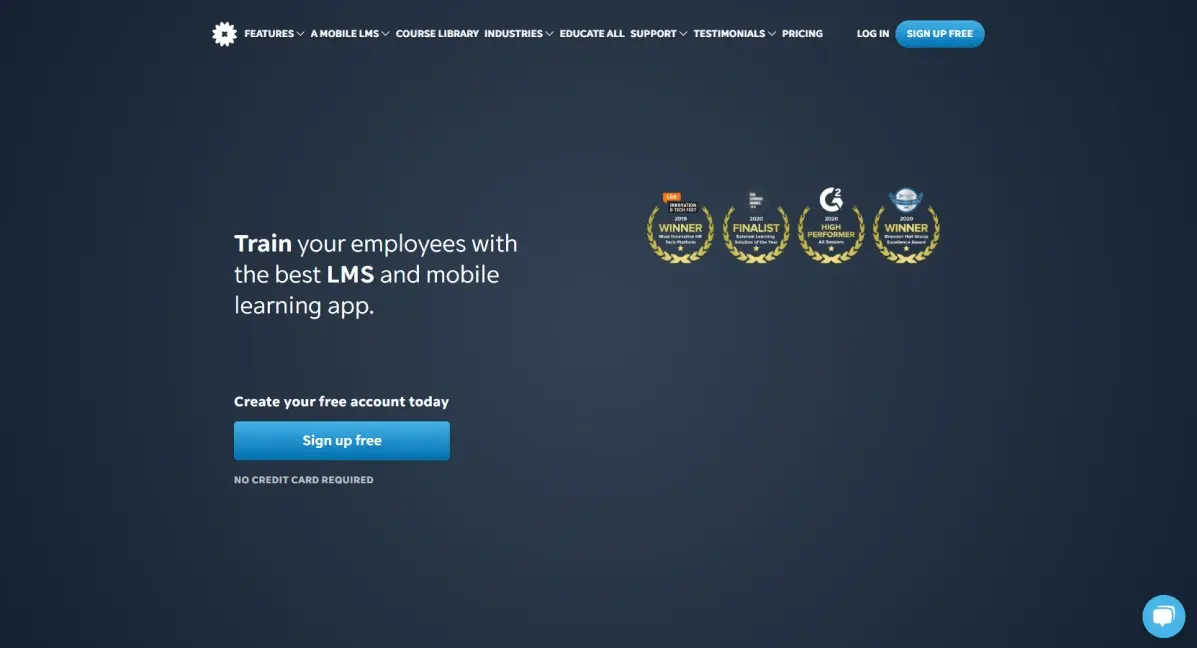
EdApp is one of the top social learning platforms offering a complete set of social features, including discussions, video conferencing integration, forums, and gamification. The best thing about this one is that it’s completely free.
Key features:
- A discussion and assignment feature designed specifically to increase social interactions and ensure the success of adult learning.
- Possibility of mentoring through forum discussions between colleagues and managers.
- An assignment feature that allows employees to send responses containing video and image elements to managers for review.
- The virtual classroom tool is a built-in feature that allows you to reach and educate team members without compromising the benefits of face-to-face interaction. It seamlessly connects your chosen video conferencing platform like Zoom, Google Meet, or Microsoft Teams directly to EdApp.
There are practically no drawbacks, but some users mention they don’t like that it is impossible to copy a task or change achievements.
Schoology
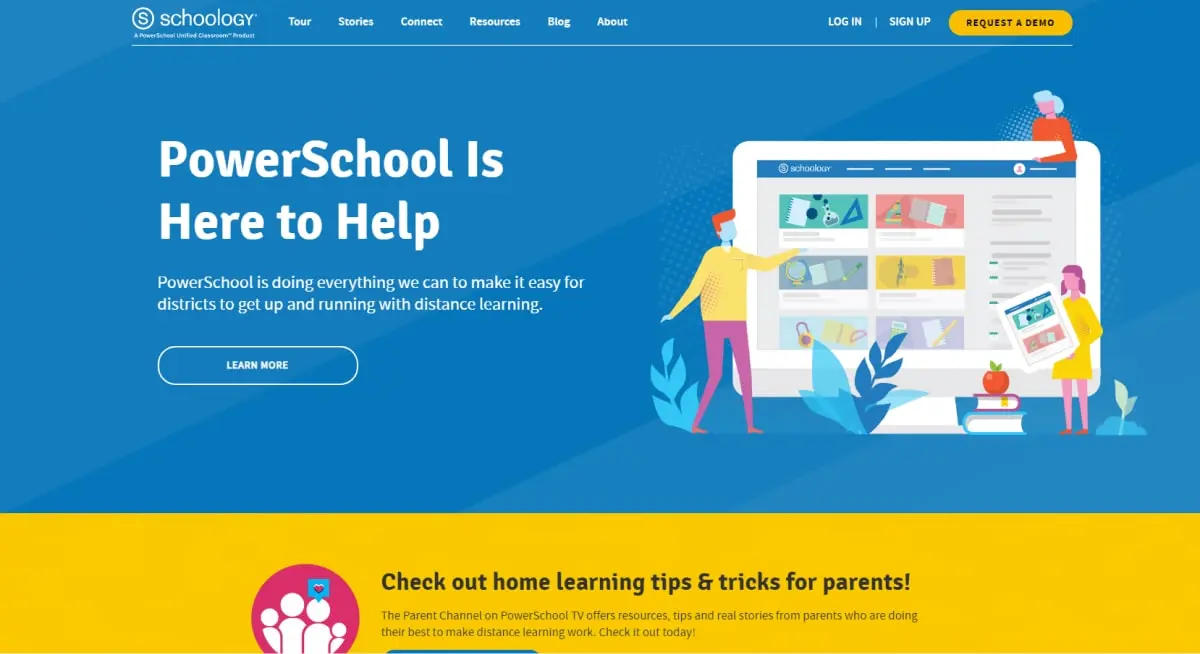
Schoology is a multi-functional LMS focused on K-12. Key features include:
- Built-in development tool;
- Video conferencing support;
- Mobile learning;
- Student portal;
- SCORM Compliant.
What do users like the most about this social learning platform for education?
- Convenience of use. Schoology is a lot like a regular social media platform.
- Simple integration with Google, Microsoft, and other educational platforms. Educators can embed edtech tools like Padlet, Polleverywhere, Thinglink, and more. You can transfer ownership to students and control them at their own pace.
- Personalization. You can add/remove and create assignments for specific groups of students.
The highlighted downsides include:
- Inclusion issues. Google Assignments are not time-stamped for assignments, and TurnItIn is too complicated.
- Smaller feature set. Ease of use means some loss of complex functionality. However, with some creativity thrown in, the platform interacts with third-party tools to compensate for any functionality.
SAP Litmos
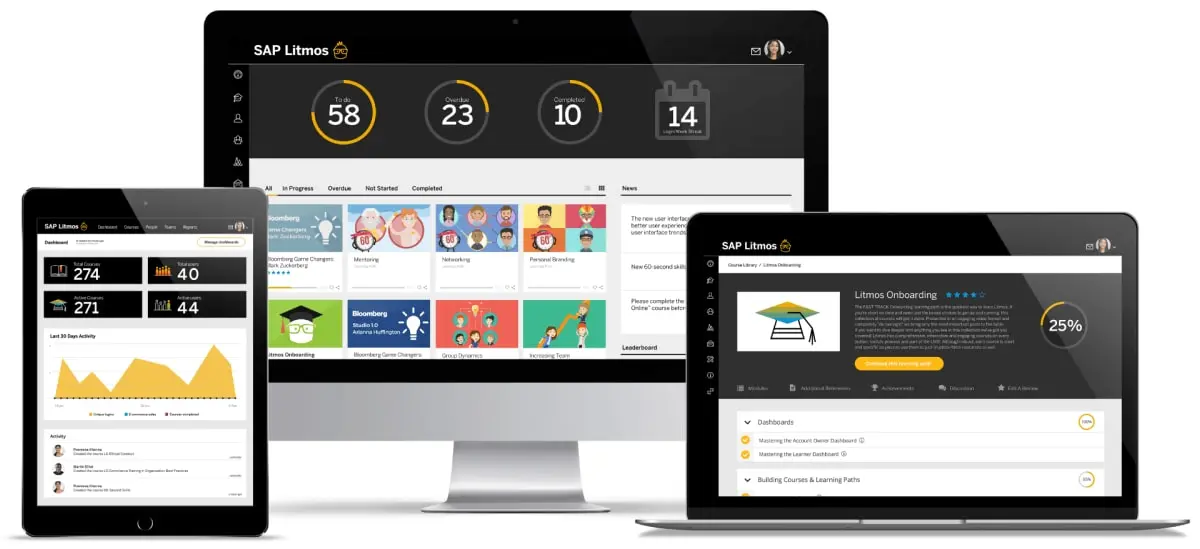
A cloud-based continuous learning platform that integrates prepackaged content and a process management system.
The advantages here include:
- SSAE 16 SOC 1 Type 2 and SOC 2 Type 2 certifications. The platform’s open API architecture and out-of-the-box connectors enable organizations to connect SAP Litmos to their ecosystem.
- Simple and consistent user experience across all devices.
- The ability to directly import content into the app, as well as create, assign courses, and track student progress.
Some drawbacks:
- Poor possibilities for combining initial courses with refresher courses.
- Frequent reporting mistakes.
Sakai
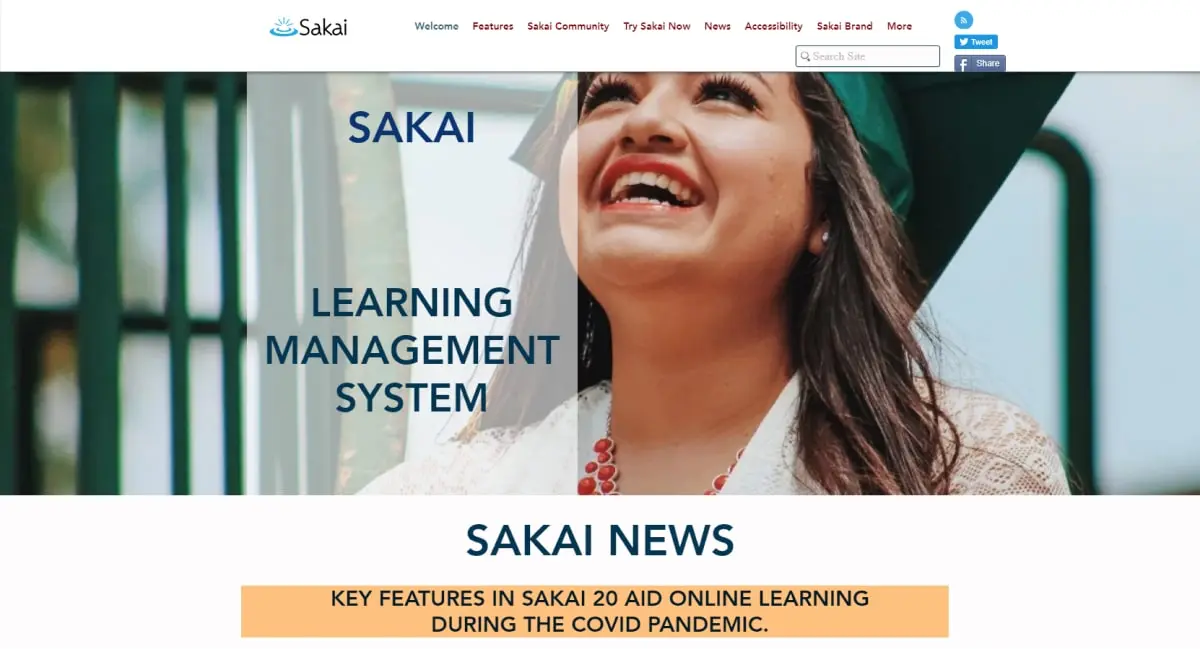
An open-source cloud platform targeted at schools with enterprise learning capabilities. In terms of social learning, Sakai offers media embedding, forums, chat functions, messaging, and video tutorial optimization.
Pros:
- Scalability, support for distributed work.
- Customer service quality. Sakai offers the best service to keep educators and learners at their best.
- A unified information environment with powerful and flexible tools for teaching, learning, and dynamic collaboration.
- Modern, simple, and accessible user interface. Thanks to its flexible design, teachers, and students can achieve academic goals no matter where they are or what device they are using.
Cons:
- Lengthy task development process.
- Paid apps that unexpectedly might go overdue.
5 reasons to pick LMS for social learning
-
1Communication and retention are essential LMS features that allow team members to work together, exchange ideas, and challenge each other productively.
-
2Virtual classroom tools are efficient built-in features that allow you to reach and educate your team members at any scale without compromising the benefits of face-to-face interaction.
-
3Flexibility — SLPs often have both mobile and desktop functionality. This feature makes e-learning flexible.
-
4Gamification and virtual labs are outstanding collaboration tools for learners.
-
5Centralized organization — diverse e-learning content is gathered, structured, and organized within a single universal system.

The LMS serves as a consistent platform for exchanging and acquiring knowledge. Also, it provides greater transparency in the organization’s culture. Social learning influences the effectiveness of teaching programs, provides insight into student engagement and motivates them.
So, Is SLP a Hype or Successful Future?
SLP is not completely a rush or crisis-driven phenomenon, but today’s real necessity predetermines the future of education. Social learning is becoming a hot topic for corporate development departments. Today, the cost of social learning tools is three times higher than it was a few years ago, as the demand for knowledge from specialized experts is growing.
Together with a trusted technical partner, you can increase the effectiveness of your company’s tools. We are not just talking about great products; we create solutions together with our clients using:
- Individual LMS development. If you don’t like the social functions in any of the existing systems, we can develop an entirely new system with as many or as few interpersonal contacts as you need;
- LMS configuration. Alternatively, we can use an open-source system and add the functionality you need if your budget is tight.
In conclusion social learning platforms are transforming the way organizations and individuals approach education, offering collaborative and engaging experiences that drive better outcomes and prepare learners for the future.
Start investing in the future right now — contact WTT Solutions and get a social learning LMS tailored specifically to your company.

Leave a Reply